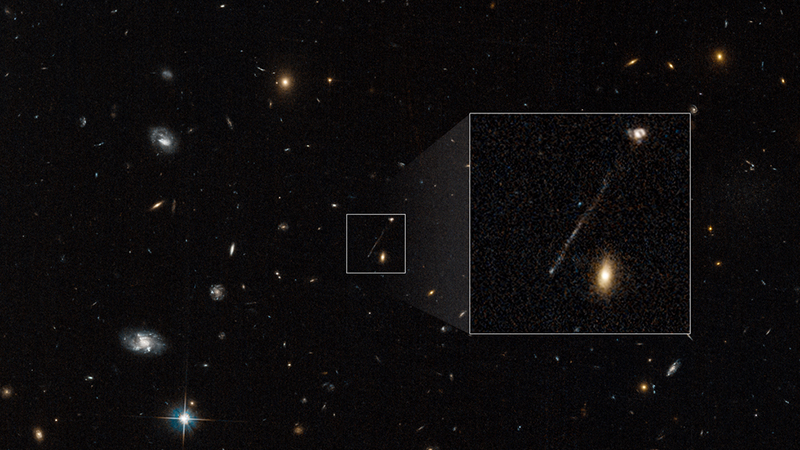Scientists estimate that the black hole’s mass is equivalent to that of 20 million suns.
Experience the Cosmic Spectacle: NASA’s Hubble Space Telescope fortuitously captures visuals of a “runaway” black hole charging through the universe, blazing a trail of freshly-formed stars in its wake. With a mass equivalent to that of 20 million suns, this black hole moves so swiftly that in our solar system, it could zip from Earth to the Moon in a mere 14 minutes, as per NASA.
Witness the Astonishing “Contrail” of Stars: Twice the size of the Milky Way, the 200,000-light-year “contrail” of stars is a mesmerizing sight that the black hole has left behind. According to NASA, this rare phenomenon is likely the outcome of a “game of galactic billiards” among three colossal black holes. The black hole is moving through a narrow corridor, plowing into gas in front of it, and inducing the formation of new stars. NASA reports that this sighting is an unprecedented discovery.
Pieter van Dokkum from Yale University in New Haven, Connecticut, describes the sight as the aftermath of the black hole, stating, “What we’re seeing is the aftermath. Like the wake of a ship we’re seeing the wake behind the black hole. The trail must have lots of new stars, given that it is almost half as bright as the host galaxy it is linked to.”
Van Dokkum said, “It was pure serendipity.”
According to NASA, he was “just scanning through the Hubble image and then I noticed that we have a little streak. I immediately thought, ‘oh, a cosmic ray hitting the camera detector and causing a linear imaging artifact.'” Van Dokkum explained, “When we eliminated cosmic rays we realized it was still there. It didn’t look like anything we’ve seen before.” The researcher was initially searching for globular star clusters in a nearby dwarf galaxy when he stumbled upon this unprecedented phenomenon.

Van Dokkum delved deeper into the discovery and confirmed that it was the result of a black hole plowing through a gas halo enveloping its host galaxy.
NASA hypothesizes that the phenomenon, dubbed an “intergalactic skyrocket,” is the culmination of multiple collisions of supermassive black holes. The first two galaxies are believed to have merged approximately 50 million years ago, resulting in the occurrence we are observing today.



